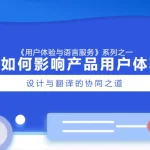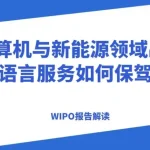Foreword
As global business expands, demand for fast, reliable translations has surged. Machine Translation Post-Editing(MTPE) offers an efficient blend of machine speed and human accuracy to meet translation needs. But where does MTPE excel, and how does it compare to traditional human translation (HT)?
This blog explores MTPE’s development, advantages, limitations, and essential strategies for maximizing its potential while balancing translation quality and efficiency.
The Evolution of Machine Translation (MT)
Understanding MTPE begins with tracing the history of MT, from early rule-based systems to today’s neural machine translation (NMT). These advancements have significantly influenced MTPE workflows:
- Rule-based MT (RBMT): Built on rigid language rules, these early systems often produced literal, context-lacking translations.
- Statistical MT (SMT): Introduced probabilistic methods, improving translation quality but still lacking nuance, especially in idiomatic language.
- Neural MT (NMT): NMT has propelled MT forward, using deep learning to achieve more context-aware, fluent translations. Yet, even NMT has limitations, often misinterpreting industry-specific or culturally nuanced terms. For example, translating “get the green light” may result in the literal “receive a green light,” missing its meaning as “receive approval.”
Though MT has advanced, its limitations emphasize the need for human input to achieve truly accurate and nuanced translations.
MTPE vs. HT
The decision between MTPE and HT depends on project needs, but both methods offer distinct benefits:
- HT: HT ensures high-quality, nuanced translations that capture cultural and linguistic subtleties—essential for creative or highly technical content, where quality is paramount. However, HT can be time-intensive and costly, making it less practical for high-volume projects with tight deadlines.
- MTPE Services: MTPE combines the speed of MT with human oversight, offering a faster, cost-effective solution for specific content types. For example, a technical manual processed through MTPE can deliver industry-standard quality in a fraction of the time required for HT. However, MTPE may lack the natural style and creative depth of HT, and depending on content complexity (for instance, highly-specialized Technical Documents), it may require extensive editing that reduces overall cost savings.
MTPE’s Limitations, and Cost Considerations
MTPE can streamline workflows and offer savings, but understanding its potential limitations and true costs is crucial:
- Limitations: MTPE’s effectiveness varies with content complexity. Legal texts, creative copy, brand-sensitive materials, or documents with abundant territory-specific terms, complex sentence structure and context understanding may demand extensive revisions, potentially diminishing MTPE’s cost benefits. In such cases, HT may ultimately provide greater efficiency and quality.
- Cost Considerations: While MTPE can be a middle-ground solution, and MT cost is neglectable, achieving high standards often requires significant editing, sometimes approaching the cost of HT. For complex content and low-quality source text, MTPE’s cost-effectiveness may be limited by the need for full post-editing.
Deciding between MTPE and HT requires understanding content needs, turnaround time, and quality expectations, as these factors directly impact efficiency and costs.
Light vs. Full MTPE
Beyond comparing MTPE to HT, it’s also key to know MTPE offers varying levels. Light and full MTPE offer distinct levels of post-editing depending on the content’s purpose and quality requirements. Knowing which level to apply can optimize cost,efficiency and output quality, allowing businesses to tailor their translation approach based on project specifics.
- Light MTPE Services: Minimal editing for clarity, ideal for internal or informal content, as well as projects with extremely tight schedule and low budget. For example, light MTPE could be used for internal company memos, where general understanding is sufficient.
- Full MTPE Services: Involves comprehensive editing, creating a polished result comparable to HT. For external and formal documents, full MTPE ensures that MT’s limitations are fully corrected, aligning tone and accuracy with brand standards. For instance, full MTPE for a client-facing brochure would correct any awkward phrases, producing an engaging, high-quality message.
Selecting the appropriate MTPE level aligns resources with content goals, maximizing MTPE efficiency.
Solutions for Effective Use of MTPE
For successful MTPE results, a structured approach can help navigate MT’s limitations and maximize quality:
- MTPE Services combined with Translation Memory (TM): TM and MTPE complement each other, enabling consistent phrasing and terminology while reducing manual effort. For example, TM’s stored phrases can streamline MTPE by applying previously validated translations for repeated text.
- Select Appropriate MT Engines: Tailoring MT engines to specific industries improves output quality, especially when dealing with specialized language. A life sciences company using a medical-focused MT engine, for instance, may find fewer technical errors in initial MT, easing the post-editing workload.
- Work with Experienced Subject Matter Expert (SME) Translators: Collaborating with SME translators ensures accurate, industry-aligned revisions. MT can sometimes produce misleading translations without context, which can be problematic or even damaging in highly regulated fields like legal or medical. By involving SME translators, companies can correct potentially critical errors and add the necessary depth to MTPE.
- Implement Quality Assurance Processes: Establishing quality benchmarks and regular feedback loops allows for consistent refinement in MTPE workflows, ensuring that quality and efficiency goals are met.
These strategies add essential structure to MTPE workflows, supporting quality translation while optimizing time and cost.
Conclusion
MTPE offers a powerful combination of machine efficiency and human expertise, making it a valuable solution for projects that require both speed and accuracy. However, to fully realize its potential, businesses must understand when and how to apply MTPE, ensuring it aligns with project needs. By integrating tools like Translation Memory (TM), industry-specific MT engines, and collaborating with subject-matter expert (SME) translators, businesses can strike the right balance between speed and quality.
About Giltbridge
With nearly three decades of growth, Giltbridge has remained dedicated to pursuing excellence—constantly refining our service quality and technical expertise to deliver outstanding language, content, and intellectual property solutions. We’re excited to partner with you on your journey to international success, unlocking opportunities and driving innovation along the way.
Contact Center
Whether you need our services or just want to learn more, reach out to our team via email, phone, or social media. We’re eager to work together and explore the boundless possibilities of the global market with you.






